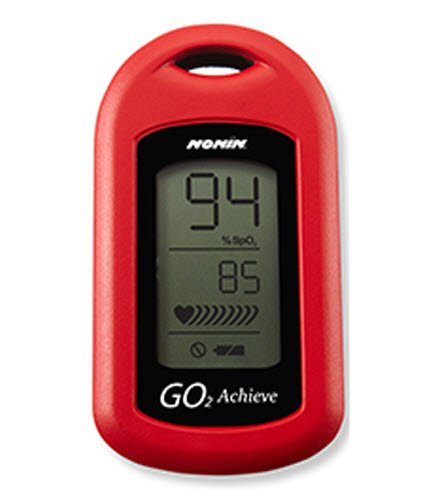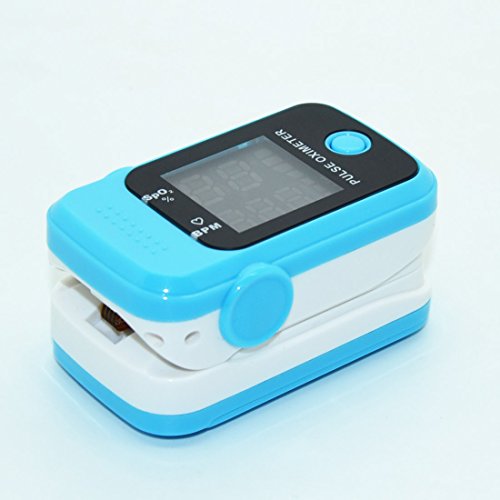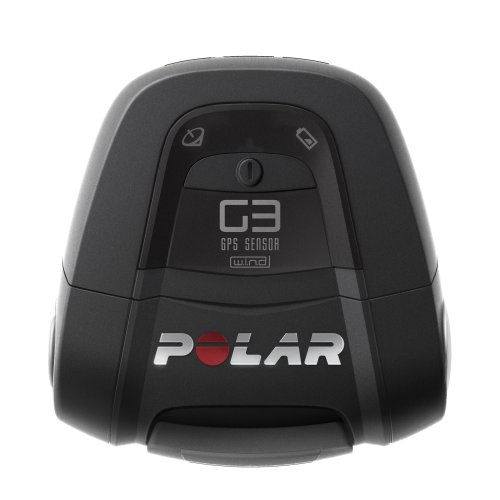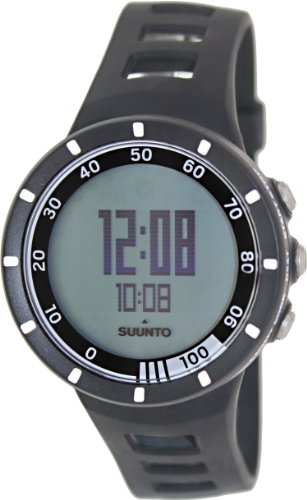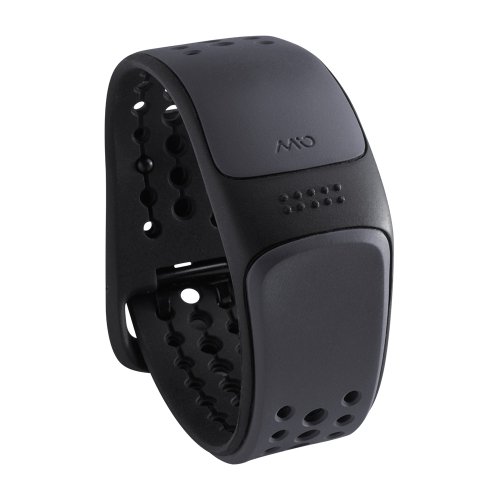

MIO Link Continuous Strapless Heart Rate Wrist Band

View larger
Make Mio the Heart of your Training – No Chest Strap Required!
Heart rate training is the most effective way to track your fitness and improve your performance. That’s why Mio develops innovative, easy-to-use products that make heart rate monitoring comfortable and accessible for all athletes. Mio LINK packs the same award-winning continuous heart rate technology as Mio ALPHA into a sleek, lightweight wristband. Mio LINK transmits data via both Bluetooth Smart (4.0) and ANT+ technology to sport devices and fitness apps. Customize your workout with up to 5 heart rate zones.
Mio Continuous Technology
Mio Continuous Technology is at the core of each of our products. Our patented design is extremely accurate, with a 0.99 correlation to EKG in laboratory testing. An optical sensor monitors the volume of blood under your skin and sophisticated algorithms are applied to the pulse signal so that the heart’s true rhythm can be detected—even at performance speeds.
Wireless Connectivity
Mio LINK transmits data via Bluetooth Smart (4.0) and ANT+ to sport devices and popular fitness apps, such as RunKeeper, Strava, MapMyRun, MapMyRide, Wahoo, Endomondo, Runtastic, and the Mio GO app. The ANT+ capability will allow you to replace your current chest strap (if you use one) and have Mio LINK supply your continuous heart rate from your wrist to your existing GPS watch, such as Garmin or Suunto, or cycling computer. Having your heart rate on your wrist instead of on your chest will allow you to train in comfort and not have the chafing, constricted feel of a cumbersome chest strap.

Continuous Heart Rate
Get your continuous and accurate heart rate in comfort. The Mio LINK uses two green LED lights and an optical sensor to measure the change in volume of the blood going through your veins. Then sophisticated algorithms find your accurate, continuous heart rate – all from your wrist with no chest strap.

Connect To Fitness Apps
Connect to your favorite mobile fitness apps through Bluetooth Smart (4.0) technology. Mio LINK sends your heart rate to popular fitness apps, such as RunKeeper, Strava, MapMyRun, MapMyRide, Wahoo, Endomondo, Runtastic, and the Mio GO app.

No Chest Strap
Train in comfort from now on. Mio products eliminate the need for a chest strap. No one likes wearing an uncomfortable chest strap that can chafe, move around and constrict. Now you don’t have to.

Connect To Cycling Computers & Sport Devices
Mio LINK also transmits your continuous heart rate via ANT+ technology, which connects you to your GPS watches (e. g. Garmin, Suunto, etc) and cycling computers.

Accurate At Any Speed
Mio products are designed to give you your accurate, continuous heart rate without a chest strap all while you’re enjoying your favorite sports, such as running, cycling and many more. Mio has been tested accurate at all speeds.

Customizable Heart Rate Zones With LED Alerts
Heart rate training is proven to help you train more efficiently and effectively, so you can optimize your performance and maximize your workout. Mio LINK offers customizable heart rate zones with LED lights that can tell you which zone you’re in at any given moment, so you can stay on track with your training goals. You can set either 1 zone or 5 zones for you to train within.
|
130 of 132 people found the following review helpful
Good-bye forever chest strap – this wrist band saw me through my first marathon and was near flawless, By
Verified Purchase(What’s this?)
This review is from: Mio LINK Heart Rate Monitor Wrist Band (Sports)
You’re probably wondering what could make me outright say I am ditching my heart-rate strap, and also why I am giving this 4 instead of 5 stars with such a statement. To give some background, I started running in April 2013, so it’s been just over a year (this review is written in April of 2014). I have used my Garmin Forerunner 410 for every run, uploading training plans to get me ready for my first 5k last May, 10k in July, Half Marathon in October, and ultimately leading up to my first Marathon in April 2014, finishing in 3:55. So I still consider myself a relative newbie, but I have been figuring out what works and what doesn’t. I was using the Garmin HRM2 chest strap for awhile, but found that on dry days I would get errant readings for the first 1-2 miles of my run until I started to sweat. The Garmin HRM3 was a bit better, but it’s still not the most comfortable to wear a strap around your chest, and I still had issues with accuracy when I wasn’t soaked in sweat. Chest strap monitors have been around for years, and they function by picking up the electrical impulse across your chest from your heart. The advantage is that once you are sweaty, they tend to be fairly accurate. The disadvantage is they can be uncomfortable on the chest (a wet strap that doesn’t dry quickly) and can chafe. My first optical HRM was my Basis B1 activity tracker. The problem with that one is that it is good at getting an occasional heart rate for monitoring activity, but it fails to pick it up during strenuous exercise. It also didn’t work with my GPS watch or my iPhone. Other optical HRM’s have similar limitations. When I read on DCRainmaker’s blog about the new Mio Link, I knew I just had to try it. The new Mio Link is just awesome and worked amazingly as I will describe. First, I measured my wrist as they recommend. My wrist just above my wrist bone is 6.25″. The small/medium band fit with 5 holes to spare. The strap actually snaps down onto itself as well so there is nothing loose. I hardly notice it on my wrist. I turned it on (simple push button on the top) and the LED flashed cyan to let me know it was on. I took my Garmin Forerunner 410, told it scan for ANT+ devices, and it came up instantly with my resting heart rate. Wow. I was up and going in no time. One of the best parts about the Mio Link is that they have removed the display and dropped the price below 0, but they kept a really cool piece of visual feedback. There is a 6 state LED color code for your heart rate from Cyan to Blue (50%-60% of Max Heart Rate) to Green (60%-70% ) to Yellow (70%-80%) to Magenta (80%-90%) to Red (90%+). These zones can be configured with your smart phone, but you don’t need the smart phone to use them once configured. That means you can use the wrist strap by itself for heart rate training without any other device. The phone app was simple enough to use. Low power Bluetooth devices aren’t always paired under “Settings” on the iPhone – you need to use the Mio app. The Mio App found the wristband quickly and suggested heart rate settings based on my age. I tweaked them since I know my max heart rate runs a bit lower, and I know my zones from experience. The app permits this customization and then it programs the wrist band. One really cool feature – the Mio Link simultaneously broadcasts ANT+ and Bluetooth, so you can use both your phone and your ANT+ compatible workout device at the same time. I didn’t use the Mio app for runs, but did find the strap worked fine with both Strava and Wahoo Fitness. The real test was my marathon. I started the marathon and had a good read on my heart rate. I had the Garmin Forerunner 410 on my wrist and the Mio Link just a bit higher on the same arm. My heart rate was rock solid. Unfortunately, at Mile 1.3 my heart rate dove from 158BPM to 101 BPM. I tightened the band 1 notch and it came right back up and stayed all the way to the end of 26.2 miles. Thanks to the Mio, I avoided going too strong up hills and I knew when I could push it harder on the downhills. The Mio Link comes with a magnetic charger that charges via USB. The cable is built into the charger. It’s a little short and might be tough to use with a wall charger. Unlike the chest straps whose batteries last over a year, this one lasts 10 hours so it will need to be charged occasionally. Before a marathon, you definitely want to charge it fully. Overall I give it a strong 4 stars. I might even say 5 stars. I only have 2 issues. First, the heart rate update seemed slightly more lagged compared to my chest strap, by about 10 seconds. I’d start up a hill but it would take a bit longer to register with my wrist monitor. Second, it would be nice to get some sort of feedback on remaining battery life, perhaps via the LED. But given the chafing, adjusting, and inaccuracies associated with a chest strap, I’d say…
50 of 52 people found the following review helpful
Mio Link: First Impressions, By
This review is from: Mio LINK Heart Rate Monitor Wrist Band (Sports)
Second Update July 18, 2014 First – Moving the band up my arm (say 2″ closer to my elbow than where I wear my watch) makes a big difference in accuracy. However, drop-outs still do occur with some regularity. There’s no other way to explain consistent heart beat rates suddenly dropping by 20 BPM for a minute or two, and then jumping back up to where they are supposed to be. Second – The yellow, low battery, warning light that is supposed to come on at the 30% (or less) charge level has proven somewhat unreliable. By my calculations (in review below), it should show when you turn the unit on and have roughly 2 and a half hours charge or less. So when I turn it on – and see no yellow light – I think I’m good to go for a two hour run. So it’s disappointing when 3/4 into the run the unit runs out of power. Third – At times the unit spontaneously turns off. I’ve got no idea why. This has happened several times, and each time upon turning it back on, its still has plenty of battery life. I don’t run but three or four times a week. But over the last few months this has happened three or four times (if that gives any idea of the frequency of the occurance of this problem.) Fourth – The little blinking light is just too infrequent to be of any real benefit. For me running with an iPhone and the Run Keeper app, which periodically announces my BPM reported from the Mio Link, is what makes it worth having. Without an app like Run Keeper (or something like it), I’d not even bother with the Mio Link. But with such an app to announce BPM, it is worthwhile. The Mio Go app may do this too. I wouldn’t know, for I’ve never used it again once I got the Link set up. Update May 9, 2014 With those changes it has completely stopped its prior behavior of reporting slow heart rates, when in fact, it was just a poor connection. I cannot confirm the accuracy of its readings now. Though they LOOK right, and are consistent (as in consistent heart rate reported over time for consistent effort). – original review below – GENERAL IMPRESSIONS THE GOOD – No chest strap – Bluetooth connection seems solid (never drops, did not try Ant+) – Works flawlessly with the RunKeeper app THE IN-BETWEEN – Single LED light: cyan, blue, green, yellow, magenta, red – Has two color progression modes: Zone Alert (blue -> green -> red progression) and Training (cyan -> blue -> green -> yellow -> magenta -> red). Each mode can be tailored to represent user customizable heart rates, but the order of the colors progression cannot be changed. – The Mio Go app is required to custom configure the rates to be represented by the various heart rate colors. But once configured, the app is no longer required. – As of this writing, the full Mio Go app is only available on iPhone. The Android version only provides the ability to customize the color heart rate settings. – Does not keep a heart rate history. For that to be retained, the Mio Link must be paired to an app while in use, so that the app can keep the history – It’s been rumored to be sized to fit RunID “Elite” tags. It does not. – When first turned on, displays one of three colors (cyan, yellow, red) indicating charged, less than 30% charged, or requiring charging to function. If the claimed battery life of 8-10 hours is true, then the initial cyan colored LED indicates at least a 30% charge, or (at a minimum) just under two and a half hours use before charging. – Custom USB charging connector. Fortunately Mio sells replacements if you lose it. – Not one-size-fits-all. There are two sizes, and buying the right size will be a critical consideration for some people. Good sizing info is available on the vendor website. – The iPhone Mio Go app has GPS, displays time, distance, current heart rate, pace and “time in zone” for activity. Also a map of current location had indoor pre-programmed activities that appear (I have not used these) to be for treadmill, stationary bike and stair…
45 of 51 people found the following review helpful
Great concept, accuracy issues, By
Tim N (Minneapolis, MN) – See all my reviews
This review is from: Mio LINK Heart Rate Monitor Wrist Band (Sports)
I pre-ordered the device with very high hopes I could ditch my old heart rate strap(s). Over the years I’ve been through various big name soft strap models — each seems to die with erratic static induced spikes eventually! I think I tried 4 different manufacturers straps until I went back to the older rubber / plastic style chest strap!
After receiving the LINK I paired it to my phone through BT and also to several of my ANT+ devices — FR 610, Edge 800, vivofit, for example. Recording of data with any of these devices was really no problem. Why such a bad rating then?! Very often my numbers don’t make sense. With enough HR recording over the years I have a decent feel for where my HR should be. I may not know it to within a beat, but certainly I am usually within 30… unfortunately the MIO often is not. I eventually recorded an old HR chest strap simultaneously with the MIO for several exercises. I did a treadmill run, outdoor long run, indoor spinning session and several outdoor rides. Nearly every time I had periods of completely wrong data — 20-30 BPM off for minutes at a time. This, to me, is just unacceptable. I’ve even tried different arms, different locations on my wrist and tightness variation. Some places do seem to work better than others, but I haven’t found one that works reliably enough, and always playing with the location is annoying. Also, if the device is too far (read… > 4 ft?) away from the recording device I see occasional signal drops — HR to "—" or 0. I can’t say the distance precisely, but if I don’t use the same arm, then I see between 4-5 drops in an hour. There have been rumors that MIO may be working on a software update, perhaps that has a shot at fixing some of the issues, if they do not… mine is going back. From reading reviews from others it seems that the device can work for some people, yet I cannot give it a recommended rating for what I have experienced in my use. 0 |





